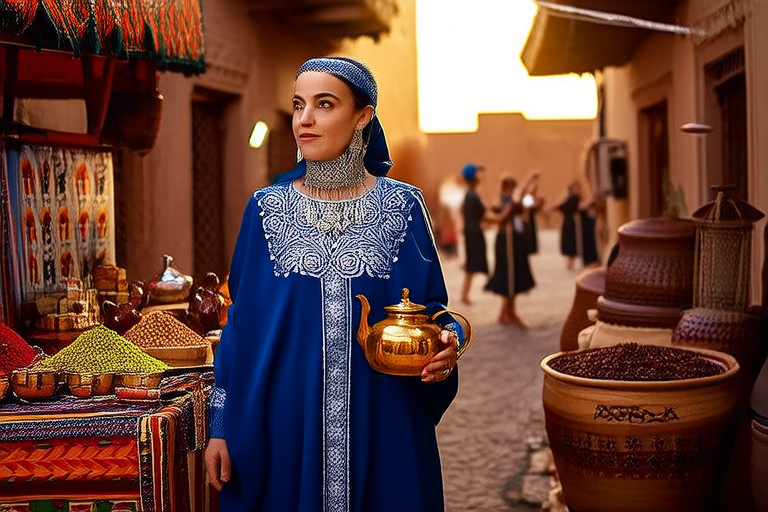Exploring the Rich tapestry of Global Cultural Traditions

Exploring the Rich Tapestry of Global Cultural Traditions
Introduction
Cultural traditions are the threads that weave together the fabric of human societies, each contributing uniquely to the rich tapestry of global heritage. These traditions encompass a wide range of practices, beliefs, and customs that have been passed down through generations, shaping the identities and values of communities worldwide. From the vibrant colors of Diwali in India to the serene rituals of the Japanese tea ceremony, cultural traditions offer a window into the soul of a people.
The diversity of these traditions is staggering, reflecting the vast array of human experiences and environments. Whether through music, dance, food, festivals, or religious observances, cultural traditions provide a means of expression and connection. Exploring these traditions not only enriches personal experiences but also fosters a deeper understanding and appreciation among different communities, breaking down barriers and promoting mutual respect.
Cultural Traditions Around the World
Asia
In Japan, the tea ceremony is more than just a ritual; it is a meditative practice that emphasizes harmony, respect, purity, and tranquility. Participants engage in a series of precise movements, each symbolizing deep philosophical principles. In contrast, the Lantern Festival in China celebrates the end of the lunar new year with colorful lanterns adorning streets and parks. Meanwhile, in India, Diwali, the festival of lights, illuminates homes with diyas and fireworks, symbolizing the triumph of light over darkness.
Thailand’s Songkran water festival marks the beginning of the Thai New Year with joyous water fights, cleansing away bad luck and welcoming the coming year with a fresh start. Each tradition offers a glimpse into the unique values and beliefs of its people.
Africa
The Maasai jumping dance in Kenya is a rite of passage for young men, showcasing strength and agility. In South Africa, the Zulu Reed Dance honors women and encourages community unity. Meanwhile, the Duk-Duk masked dancers of Papua New Guinea perform elaborate dances that tell ancient stories and enforce social norms.
Europe
Oktoberfest in Germany is a celebration of beer and camaraderie, drawing millions of visitors annually. In Spain, the La Tomatina tomato fight is a chaotic yet joyful event where participants throw tomatoes at each other. Though not strictly European, Carnival in Brazil is heavily influenced by European traditions, featuring parades, costumes, and street parties.
Americas
Mexico’s Dia de los Muertos honors deceased loved ones with vibrant altars, marigolds, and sugar skulls. Native American communities celebrate the Powwow, a gathering of dancers, drummers, and artisans. The Rio de Janeiro Carnival, one of the largest in the world, features elaborate floats, samba dancing, and lively street performances.
Oceania
New Zealand’s Māori Haka dance is a powerful performance that combines song, chant, and movement to express a range of emotions, from celebration to challenge. In Australia, Aboriginal corroboree dances are spiritual ceremonies that involve storytelling through movement and song, connecting participants to their ancestors and the land.
Importance of Cultural Exchange
Exposure to different cultural traditions promotes mutual respect, understanding, and appreciation. By experiencing these traditions firsthand, individuals gain insights into the values, beliefs, and daily lives of others. Tourism plays a crucial role in preserving and promoting these traditions, often serving as a platform for cross-cultural exchange.
However, engaging with unfamiliar cultures can sometimes lead to misunderstandings or misinterpretations. It is essential to approach these traditions with an open mind and a willingness to learn. Cultural sensitivity and respect for local customs are paramount to fostering positive interactions and preventing cultural appropriation.
Personal Reflections and Experiences
My first encounter with the Māori Haka was both awe-inspiring and humbling. Watching the powerful dance unfold, I felt a deep connection to the performers’ shared history and pride. Participating in a Powwow taught me the importance of community and the joy of shared cultural expression. Each experience has enriched my perspective and deepened my appreciation for the diversity of human traditions.
I encourage readers to reflect on their own encounters with different cultures and how these experiences have shaped their views. Whether through travel, literature, or conversation, exploring cultural traditions can broaden horizons and foster a greater sense of global citizenship.
Conclusion
In summary, cultural traditions are the threads that bind humanity together, offering a window into the hearts and minds of people across the globe. From the serene tea ceremonies of Japan to the vibrant celebrations of Carnival in Brazil, each tradition tells a unique story and reflects the values and beliefs of its people.
Embracing and celebrating these traditions enriches our personal experiences and fosters mutual respect and understanding. By continuing to explore and engage with different cultures, we can build bridges of empathy and promote a more inclusive and interconnected world.